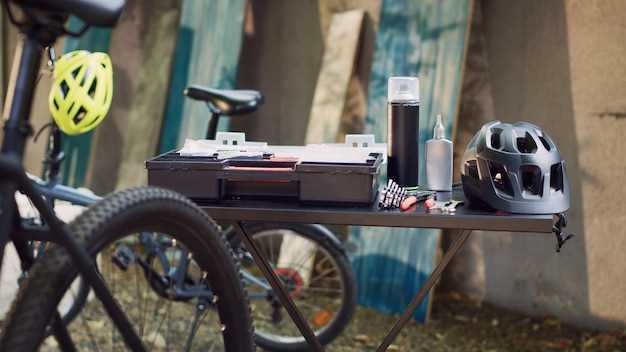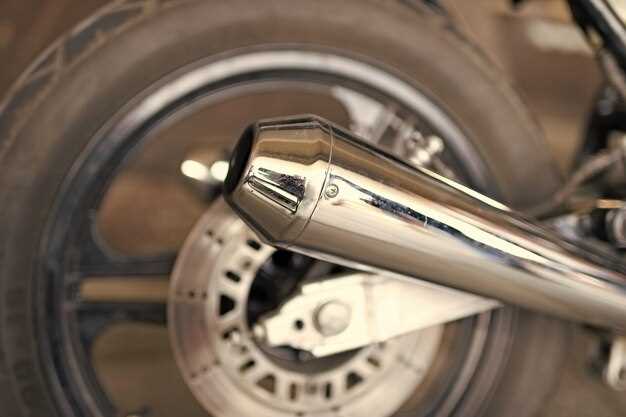
Building a custom touring bike is an exciting journey that allows cyclists to create a setup tailored to their unique riding style and preferences. The process involves selecting key components that enhance both performance and comfort during long-distance travel. Each choice you make plays a vital role in how your bike performs on various terrains, making it essential to consider the reliability and functionality of each mod.
When embarking on your custom bike build, focus on the frame as the foundational element that will support all other components. A lightweight yet sturdy frame will ensure that your bike can withstand the rigors of touring while providing the necessary stability. Additionally, paying attention to the suspension system can significantly improve comfort on uneven surfaces, making your setup more enjoyable during long rides.
Another critical aspect to consider is the wheelset. Choosing wheels that are designed for durability and efficiency is paramount for touring. Look for options that accommodate wider tires, providing better traction and shock absorption. Investing in high-quality components such as derailleurs, cranksets, and brakes will further enhance your bike’s performance, ensuring that your custom touring bike is well-equipped for any adventure ahead.
Selecting the Right Frame and Geometry for Touring

Choosing the right frame for your custom touring bike is crucial for ensuring comfort, stability, and performance during long rides. The frame serves as the foundation for how your bike will handle various terrains and carrying loads, making geometry an essential consideration.
Material Selection: The material of the frame can significantly impact weight, durability, and ride quality. Aluminum frames are lightweight and affordable, while steel offers excellent strength and ride comfort. Titanium is a premium option, providing a balance of weight savings and durability. Consider the material that best suits your touring needs and potential for mods in the future.
Frame Geometry: Touring bikes typically feature a relaxed geometry to enhance comfort on long rides. Look for a longer wheelbase, which contributes to stability, especially when loaded with gear. A taller head tube allows for a more upright riding position, reducing strain on the back and neck over extended periods.
Standover Height: Ensure the standover height is appropriate for your inseam. A lower standover height makes it easier to mount and dismount, which is especially important when navigating varied terrains or making frequent stops on your journey.
Clearance for Tires and Fenders: Choose a frame that provides enough clearance for wider tires, which enhance comfort and grip. Additionally, having space for fenders is a significant mod consideration, offering protection from mud and water when riding in foul weather.
Load Capacity: The touring frame should be rated for the weight you plan to carry. Check for mounting points for racks and panniers; a robust design can significantly enhance your bike’s versatility and performance.
In summary, selecting the right frame and geometry for your custom touring bike is paramount. Take your time to evaluate materials, geometry, standover height, tire clearance, and load capacity to ensure your build will meet the demands of long-distance touring.
Upgrading Drivetrain and Gearing for Long-Distance Travel

When embarking on long-distance touring, having the right drivetrain and gearing setup is essential for efficiency and comfort. Upgrading your bike’s drivetrain can significantly enhance your riding experience, allowing for smoother transitions between gears and better performance on varied terrains.
The choice of gearing is critical. A wider gear range is beneficial; it allows you to tackle steep climbs without overexertion while still providing high-speed options for flat sections. Consider installing a compact crankset or a wide-range cassette; these mods can make a notable difference in how your bike performs during extended rides.
Maintenance of your drivetrain also plays a crucial role in the overall performance. Opting for higher-quality components, such as stainless steel chains and derailleur systems, can improve durability and require less frequent replacements. Regular cleaning and lubrication of the drivetrain will ensure it operates smoothly and efficiently, reducing wear and tear during long tours.
Shifting reliability is another important factor to consider. Upgrading to a modern 11-speed or 12-speed system can provide more precise shifting, which is invaluable when navigating through challenging landscapes. These setups also typically feature better-designed derailleurs that minimize the chances of dropped chains, enhancing your overall touring experience.
Ultimately, your drivetrain and gearing mods should align with the type of terrain you plan to tackle and your personal riding style. Investing time into selecting the right components will lead to a more enjoyable and successful touring adventure, ensuring you can focus on the journey ahead rather than mechanical issues.
Essential Accessories for Comfort and Safety on the Road
When embarking on a custom touring bike build, it’s essential to consider not only the bike’s components but also the accessories that enhance your setup. Comfort and safety play crucial roles in long-distance touring, where every detail contributes to an enjoyable experience.
One of the first mods to consider is the saddle. A high-quality, ergonomically designed saddle can make a significant difference during extended rides. Look for options that provide ample padding and support, as this reduces fatigue and discomfort on long journeys.
Additionally, handlebar grips are vital for maintaining comfort over long hours. Invest in grips that fit your hands well and feature cushioning properties. Ergonomic grips alleviate strain, enabling a more relaxed riding posture, which is essential for touring adventures.
Another must-have accessory is a reliable hydration system. Staying hydrated is crucial during long rides, and having an easily accessible hydration pack or bottle cages allows for quick hydration without interrupting your cycling rhythm. Consider models that are designed to minimize bouncing or movement as you ride.
To enhance visibility and safety, equipping your bike with proper lighting is imperative. Front and rear lights, as well as reflectors, increase your presence on the road, making it easier for other vehicles to see you, especially during low-light conditions. Look for lights that offer different modes, including steady and flashing options, to ensure visibility in various environments.
Finally, don’t overlook the importance of a good helmet. A durable, well-fitted helmet is an essential safety gear for any touring setup. Choose a model that emphasizes ventilation and comfort while meeting safety standards. An additional visor can protect against sun glare and debris, further enhancing your touring experience.
Incorporating these essential accessories into your touring bike build will ensure enhanced comfort and safety on the road, allowing you to focus on the adventure ahead.
